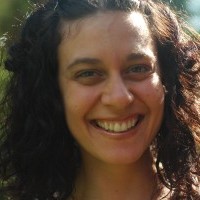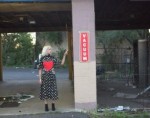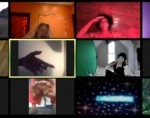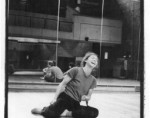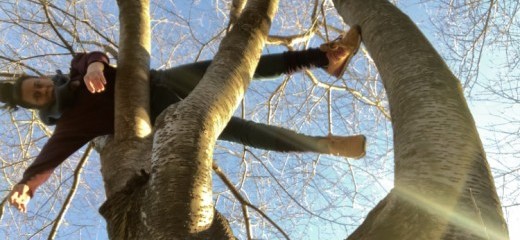
Intentional Reemergence: dreaming the aftertime
by Nicole Bindler
In January 2021 I offered a five week class series through freeskewl in which we dreamed, schemed, and moved together. We used tools from consent practices and polyvagal theory to envision rebuilding in-person dance and somatics communities in ways that tangibly address the inequities laid bare by the pandemic. For the first half of each session we practiced Body-Mind Centering®, Authentic Movement, and solo contact improvisation with our furniture. Then we spent time co-writing in a shared Google document. What follows are the questions I asked the participants, and answers from thirteen of us addressing strategies for moving together again in the flesh with ease, respect, and generosity when it is safe to do so.
The first few questions were sparked by my personal curiosity and the following questions arose out of conversations in the classes that informed what I asked participants in subsequent sessions. I selected answers that I felt illuminated new ideas around how this transition might play out in embodiment contexts, and I included a couple of my answers because I participated in the writing alongside them. Some participants who wrote more than others and/or showed up for more sessions are more represented in the article. The people who showed up to the classes were professional and/or social dancers, and somatics practitioners from North America and Europe. All of the participants were white or white-presenting, which inevitably shaped our perspectives and biases.
What are you most looking forward to in the reemergence?
Sensing someone moving a few inches away from me and my skin prickling up in response.
––Shannon Brooks (she/they)
Making room for vulnerability and sensing our bodies in a common physical space.
––Amelie Gaulier (she/her)
Hugging, holding, breathing, laughing, sweating, thinking, and creating together with friends and strangers in the same space.
––Rebecca Lloyd-Jones (she/her)
How do you see yourself potentially interacting with others in the beginnings, and what might be challenging for you in group spaces?
It will be hard to be close. We have had a year feeling the pandemic’s betrayal and risk. I find my legs tensing up in the flight response simply watching crowd scenes in early 2000s reality TV shows. It will be a process of working with that tension and rebuilding trust.
––Brooks
I see myself continuing to struggle with a sense of overwhelm/anxiety and shyness/freeze response in social situations. I see myself learning more intentionally how to express myself and communicate, as well as putting more effort into cultivating new connections, and building a nourishing support network.
––Maya Venditti (she/they)
I anticipate extreme joy, and the grief that can arise once I have a thing I’ve been longing for, and the disappointment of realizing that the thing I’ve been dreaming about is still fraught and imperfect.
––Bindler (she/her)
Staying centered might feel hard, because being in a group setting feels like a fleeting dream right now. I realize that being in a community takes practice, and I am out of practice.
––Lloyd-Jones
Rebecca Lloyd-Jones
Image of Lloyd-Jones dancing alone in a hallway.
What assumptions/omissions/microaggressions have you made about others’ experiences, and how do you consider others’ conditions while on Zoom or in conversations?
I love being alone right now and forget sometimes how awful it can be, how soul-draining. I see people going out and meeting others in person. I forget to factor in the intense loneliness that many feel and how that impacts those types of decisions.
––Naomi Bennett (she/her/hers)
Not everyone has access to high speed internet/Zoom, etc., and they have been further isolated and disenfranchised by that during the pandemic. Even getting access to employment opportunities and telehealth is a huge challenge for many at this time.
––Sara Kraft (she/her)

Claudia McCabe
Image of Venditti seated in the grass.
Beyond all the familiar oppressions and microaggressions we see in embodiment spaces and in society at large, what new kinds of differences/hierarchies have emerged during the pandemic (or how has the pandemic amplified existing inequities?)
The isolation and health risk COVID-19 poses for disabled people or those with chronic illnesses furthers inequities that were already actively exploiting and harming them before the pandemic. I have not heard or seen many friends since March because the social services they receive are undersupported and exploitative in nature or because they do not have the technologies that are accessible for them. Some of these friends have passed or have been traumatized by their treatment during the pandemic.
––Brooks
The impact on BIPOC has been so devastating, and the split between people who are white and BIPOC has been starkly revealed. This pandemic opened up what our mainstream society was blind to see: racial injustice is real.
––Gaulier
For those who are currently experiencing traumatic events or are reexperiencing past trauma, class structures may prevent them from feeling that they can escape or move beyond their current reality. The access to self-regulation activities and co-regulation spaces are even more unequally distributed.
––Venditti
Living in Baton Rouge there is already a huge political/ideological divide and I worry that will explode when we are back in person. I already see people clashing and not being able to even have simple discussions about the need for remote learning or other safety measures.
––Bennett
How might we address these inequities in our dance and somatics communities when we come back together in the flesh?
Openly talking about access (health risk is a part of accessibility!) and how our body-minds are interacting with and being affected by a space and each other. Then taking real action to support the traumas felt during, before, and after the pandemic, and transforming spaces and structures that continue exploitation and oppression.
––Brooks
It has to be financially feasible. I’m unable to live on my artist’s wages and must constantly supplement. To create a space/environment/community that is welcoming and healing to all requires concerted energetic and financial commitments as well as time/labor. To bring that into reality requires changing the funding priorities of local agencies as well as sharing links to possible resources with others in the region. It requires a hell of a lot of talking and demonstrating and love and Sisyphian-boulder-pushing up a hill.
––Angelica Dzeli Palmer (she/it)
Ze Grey
Image of Lloyd-Jones in the snow at night.
What would a functional, generative, thriving, joyful dance-world look like?
- Fat-tissue informed practice
- It would smell less like school exercise
- Fractal learning
- Somehow really hard to phrase this right now without just saying NOT THAT
––Mäks Roßmöller (ber)
Flowing with laughter, vulnerability, connection, music, love. Engaging, inclusive, soulful, mindful, collaborative, amicably competitive. Allowing all dancers the freedom to be imperfect, to attempt, to fall and remain supported.
––Jon Ryan McMahon (he/him)
I want to see a dance world where choreographers receive a living wage regardless of artistic “merit.” Where dance studio space is government subsidized and wheelchair accessible. Where elders are honored for their embodied knowledge. Where lineages are cited. Where choreographers and somatics professionals are hired by companies and governments as valued consultants in public projects. Where queerness and Blackness are elevated and celebrated through increased visibility and reparations initiatives. And many, many other things I can’t imagine at this very moment.
––Bindler
What roles do self and community care play in a vision of a more just, equitable, joyful dance-world? How do we care for ourselves and each other?
Clear expectations prior to entering a contact improvisation (CI) space, not just in the opening circle. Practicing to be aware of non-verbal consent and non-consent. Space to step out and check in. At the CI jam I go (went) to in NOLA, there are always 2-3 people designated as safe people who could be tapped out to talk at any time if anyone is uncomfortable during the jam.
––Bennett
At the heart of CI - for me - is negotiating. The physical point of contact is where we negotiate how you and I meet. We negotiate ideas, wishes and boundaries, directions to take in space, power dynamics (who is leading or following), to name a few of the relational dynamics that are inherent to this dance form. COVID-19 now has put an additional issue on the plate (that actually was there all along, yet often not consciously dealt with): to touch or not to touch? How to decide that? Who feels vulnerable and who deals with that? I wonder if all those points instead of being regarded as threatening to the practice of CI can be embraced and lead to a more conscious and open discussion about consent.
––Jenny Döll (she/her)
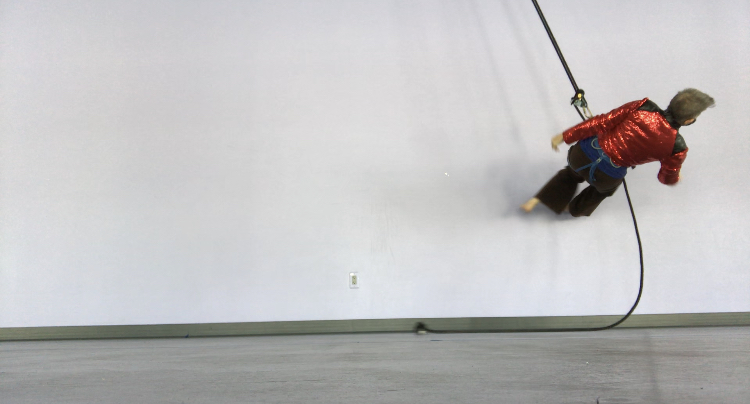
Sasha Lasdon
Image of Lasdon hanging from a wall.
Imagine your best case scenarios for the fields of dance and somatics. Really go for it. Let your dreams run wild.
Instead of gyms fueling adrenal exhaustion there are movement spaces where it is normal for a diversity of people to move, pause, reflect, connect, speed up, slow down, be.
––Sandra Gillespie (she/her)
Yes to plenty of funding and access. Scent-free, sensory friendly, wheelchair accessible. Many studios and outdoor spaces are available. Snacks. A feeling of generosity, investigation, and plenty of time. Everyone has the resources in the rest of their lives to make this possible (universal basic income, childcare, et.al.). A variety of options in a well-managed, cared for, abundant setting. There is at least one studio rigged for aerial. All of us are receiving artist stipends for the time we spend in the studio to help sustain our lives. Also, universal translation devices are widely available.
––Sasha Lasdon (they/them/theirs)
* * *
This project has cracked open new questions for me that I plan to ask participants in future sessions. How will we contend with the grief around the individual artists who have lost their lives to COVID-19? Or the grief about all the lost venues, organizations, companies, and funders who have stopped operations this year? In the messy transition from isolation to reconnection, I wonder how we will address different needs around nervous system stimulation and touch. Might we have designated spaces at dance festivals for soloing and/or resting? And how will we address the already developing caste system around vaccine access?
My hope is that the time apart from one another will inspire dance artists and somatics practitioners to savor each other’s company and agitate for equity and access for all. My dream is that dance audiences and funders will feel the impact of the closures of so many dance venues and invest in the future of dance. There are many groups and events that have coalesced around these concerns such as Dance Artists’ National Collective, The Future of CI Conference, Future Space Philly, Creating New Futures, The Dance Union, Body IQ Festival, and Dance/NYC’s Symposium on reimagining the dance ecology, to name a few.
By Nicole Bindler
March 29, 2021

